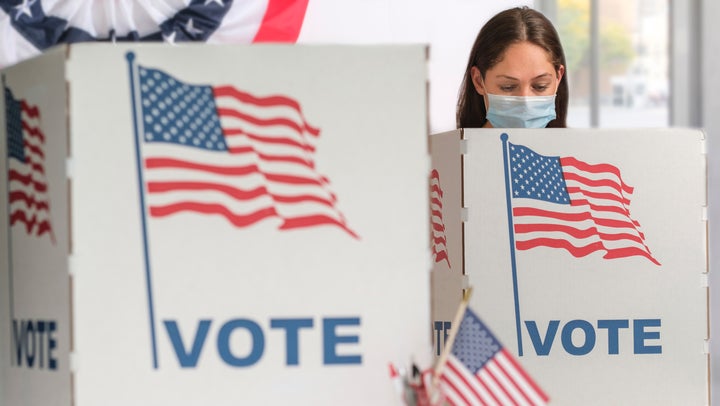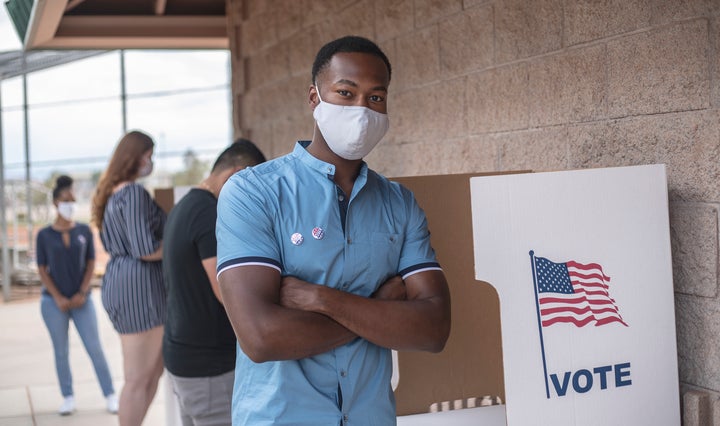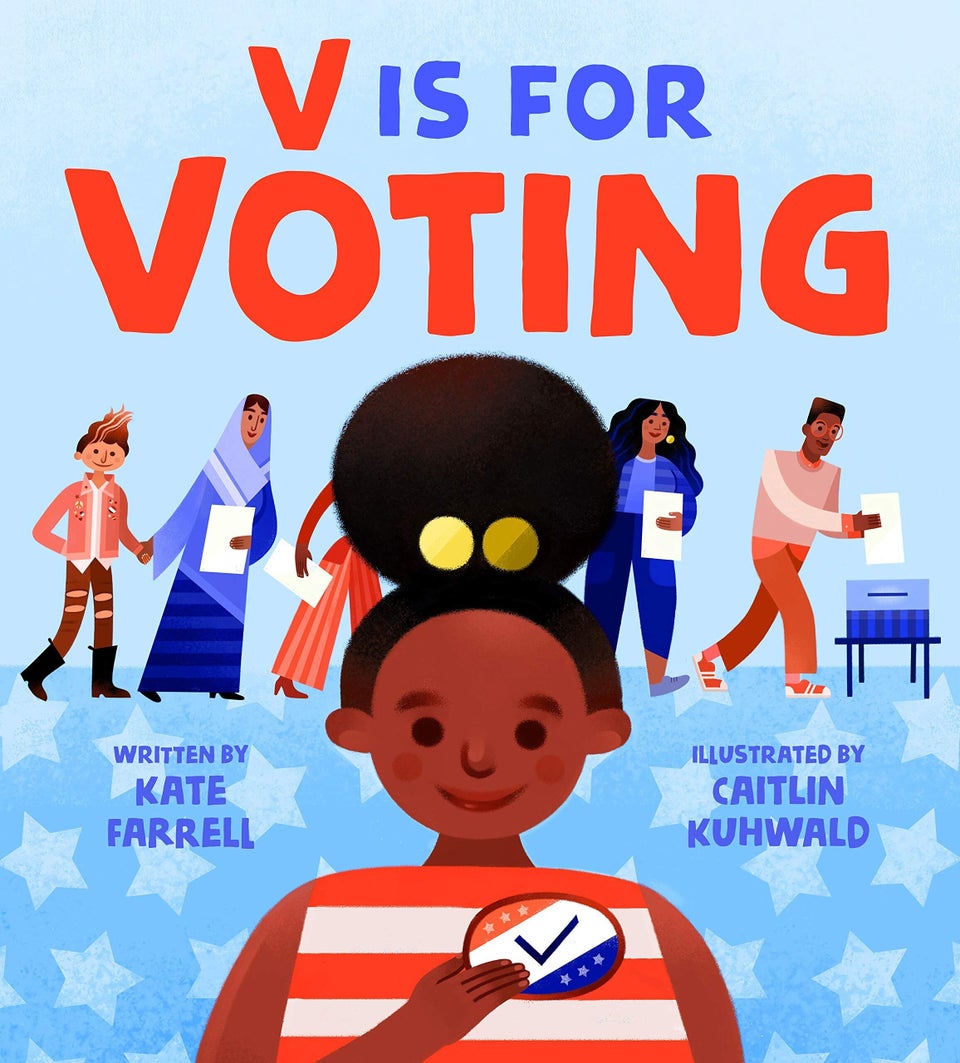Millions of Americans have already cast their ballots in the 2020 election, but many others are still figuring out their plans to vote this year.
The vote-by-mail option allows people to avoid the possibility of large crowds at the polls, where the coronavirus could spread. But lingering concerns about a potentially overloaded U.S. Postal Service and rejected absentee ballots have some people wondering if they’re better off voting in person.
(It’s worth noting that recent numbers from an NPR/PBS NewsHour/Marist poll show that fewer people are now planning to vote by mail than experts initially anticipated — but voting behavior is notoriously hard to predict.)
We asked medical experts to weigh in on the health risks involved and share some tips on what we can do to make voting in person safer.
How risky is it to vote in person during the pandemic?

When Wisconsin held its primary in April, fears about transmission at the polls were rampant — especially in the city of Milwaukee, where all but five of the 180 polling sites were closed. As a result, long lines formed at the locations that remained open.
A follow-up study from the Centers for Disease Control and Prevention in July showed that those fears may have been unfounded.
“No clear increase in cases, hospitalizations, or deaths was observed after the election,” the authors of the report stated, while pointing out that the large number of Milwaukee residents who voted by mail and the safety measures taken at the precincts likely helped, too. (An earlier study looking at county-level data in the state did find a link between in-person voting and COVID-19 infection. But keep in mind that early April was before face masks were widely adopted.)
At this stage of the pandemic, many experts seem to agree that the risk from in-person voting is relatively low for healthy individuals who are not in a high-risk group (more on that in a minute) and take the proper precautions. That includes wearing a mask, maintaining social distancing in line, and practicing proper hand hygiene.
Zeke Emanuel, a bioethicist and former Obama administration health adviser, said the risk of voting in person is comparable to the risk of going to the grocery store. Anthony Fauci, the nation’s top infectious disease expert, said in August that in-person voting can be safe “if carefully done according to the guidelines.”
Lee Riley, professor and head of the infectious diseases and vaccinology division at the University of California, Berkeley, told HuffPost it’s actually the poll workers ― not the voters ― who are at greater risk of infection. They’ll be interacting with many people inside the voting location.
“For the voters themselves, as long as they wear a mask and maintain social distancing of 6 feet, and sanitize their hands after they cast their vote, the risk is minimal,” he said. “Most of the wait time for voting will be outside in many places, which will be safer than in enclosed spaces.”
“For the voters themselves, as long as they wear a mask and maintain social distancing of 6 feet, and sanitize their hands after they cast their vote, the risk is minimal.”
- Lee Riley, professor and head of the infectious diseases and vaccinology division at the University of California, Berkeley
That said, any amount of risk may be too great for those who fall into the high-risk category — or live with someone who does. That includes older adults, individuals who have an underlying condition like cancer or diabetes, and those with compromised immune systems who are at greater risk of severe complications from COVID-19.
“If possible, they should consider mailing in their vote,” said Neha Nanda, medical director of infection prevention and antimicrobial stewardship for Keck Medicine of USC. “However, if they do decide to vote, they should be really disciplined about safe practices as outlined above.”
If you’re not sure about your risk level, Kavita Patel, HuffPost’s medical contributor and a practicing internal medicine physician in Washington, D.C., recommends consulting a health professional to determine the best course of action for you.
How to make in-person voting safer

For voters who plan to cast their ballots in person, experts offer some tips on how to make it a safer experience for you and those around you.
1. Make a voting plan.
“Plan in advance how to get there and what time of day for lowest lines,” Patel said.
Depending on what state you live in, you may able to cast your ballot in person during the early voting period, instead of on Election Day.
If you received an absentee ballot but don’t want to send it back in the mail, you may be able to drop it off at a designated ballot box, an early voting location or polling place on Nov. 3. Check with your state or local election office to see which options are available to you.
2. This should go without saying, but if you’re sick, stay home.
“Do not vote in person if you are feeling unwell,” Nanda said.
In many states, someone else can submit your absentee ballot for you.
3. Consider getting a flu shot beforehand.
Nanda recommends getting your influenza vaccine at least two weeks before you plan to vote to allow enough time for antibodies to build up.
4. Wear your face mask.
You want a face covering that has a couple layers and fits you well, Nanda said.
“Wear a mask while you wait, when you go inside the voting booth, and afterwards until you get home,” Riley added.
Patel also suggested bringing a few extra disposable masks with you in case someone in line needs one and you want to hand it out.
5. Bring your filled-out sample ballot with you to speed up the process.
“That [way] you don’t have to spend too much time to fill out the ballot at the voting booth,” Riley said.
6. Pack a bag with hand sanitizer, a pen and maybe a book to pass the time.
Remember you want a hand sanitizer that’s at least 60% alcohol to clean your hands before and after you vote.
Patel also suggested bringing some unused tissues or napkins in case you need to grab any high-tough surfaces like door handles.
7. Maintain social distancing.
Stay a minimum of 6 feet from other voters in line.
If you’re concerned that won’t be possible at your polling place and you’d rather not take a chance, voting by mail is still a great option. Just be sure to return your ballot early if you can, rather than waiting until the deadline.

